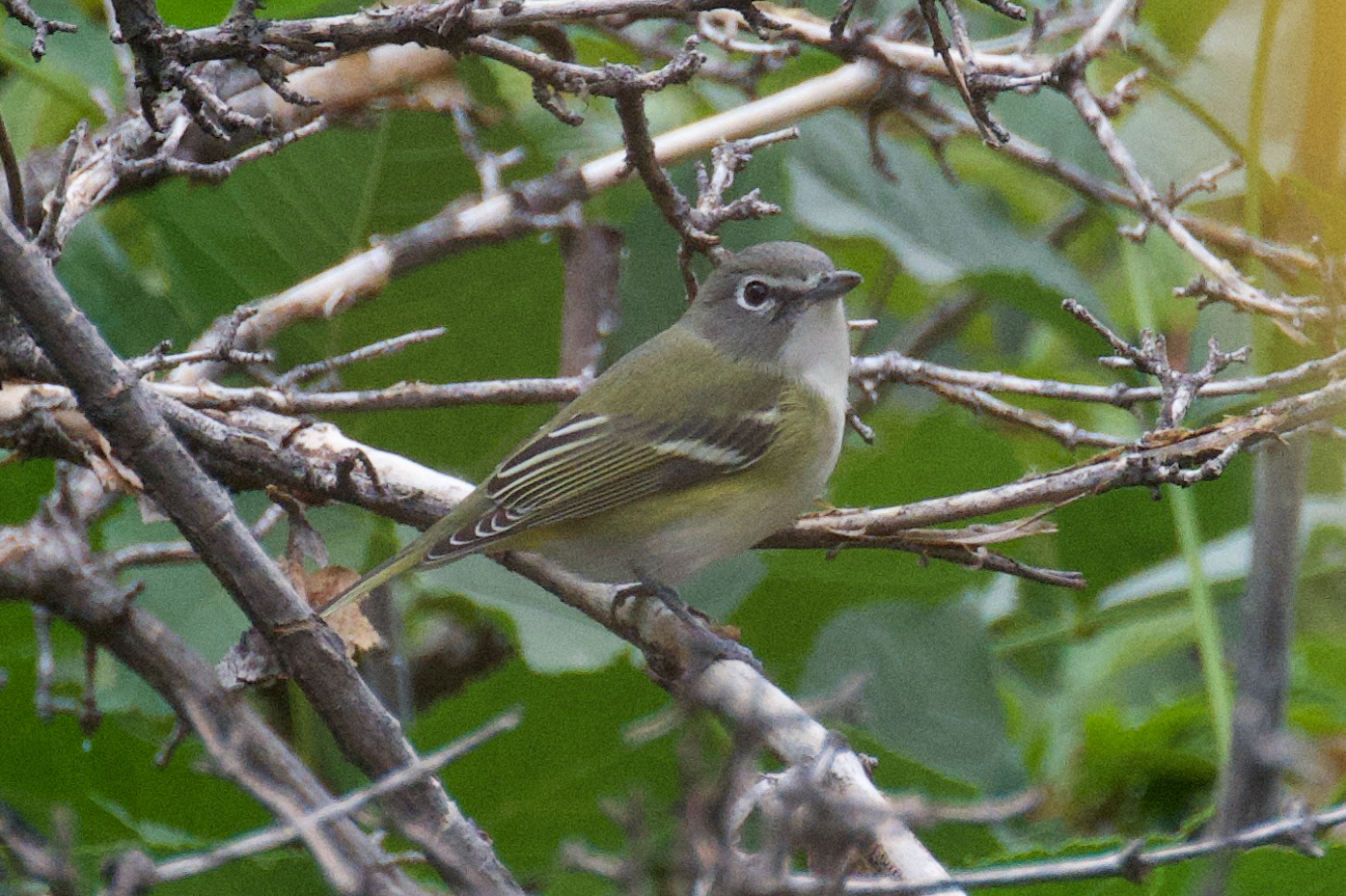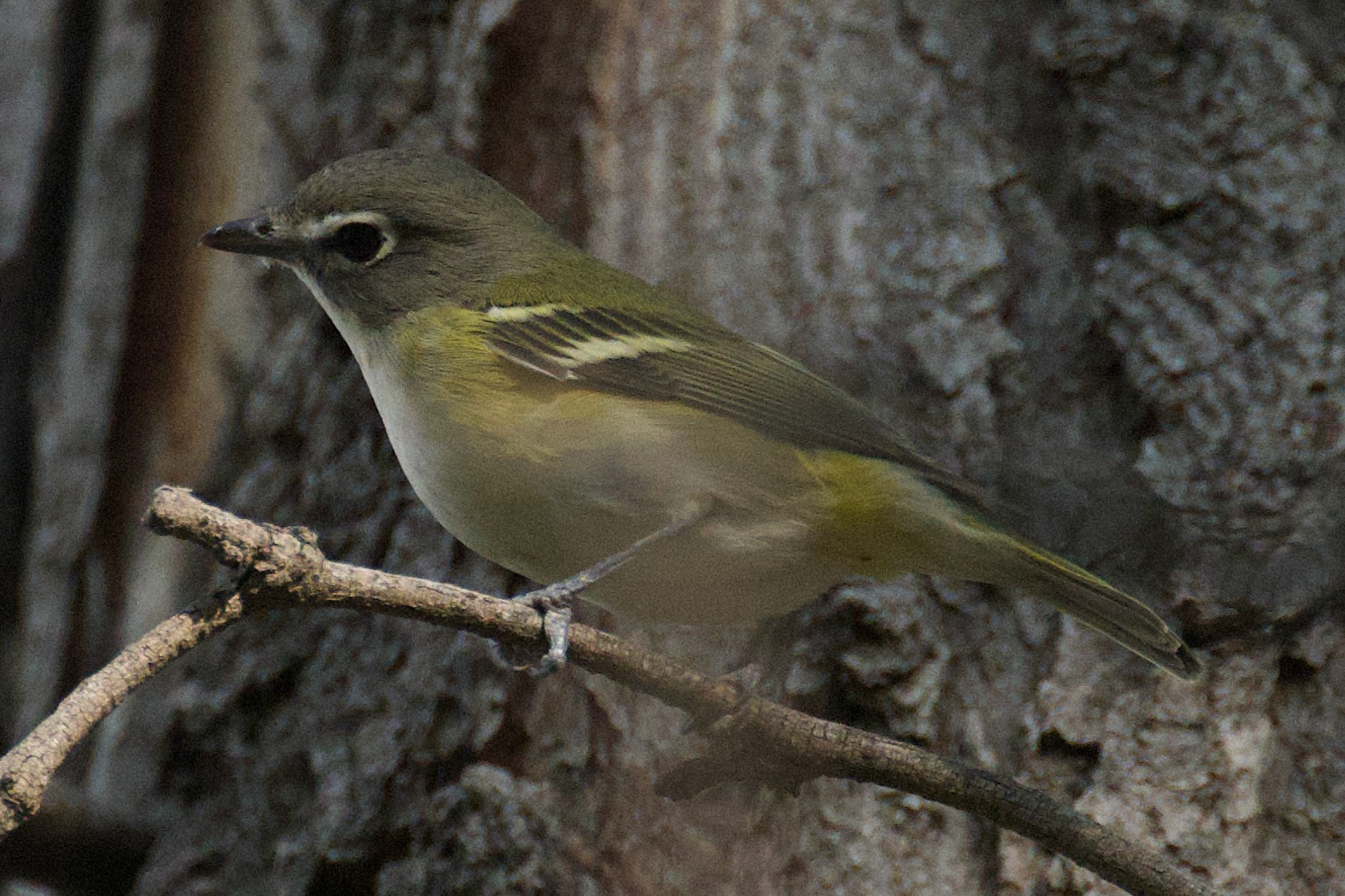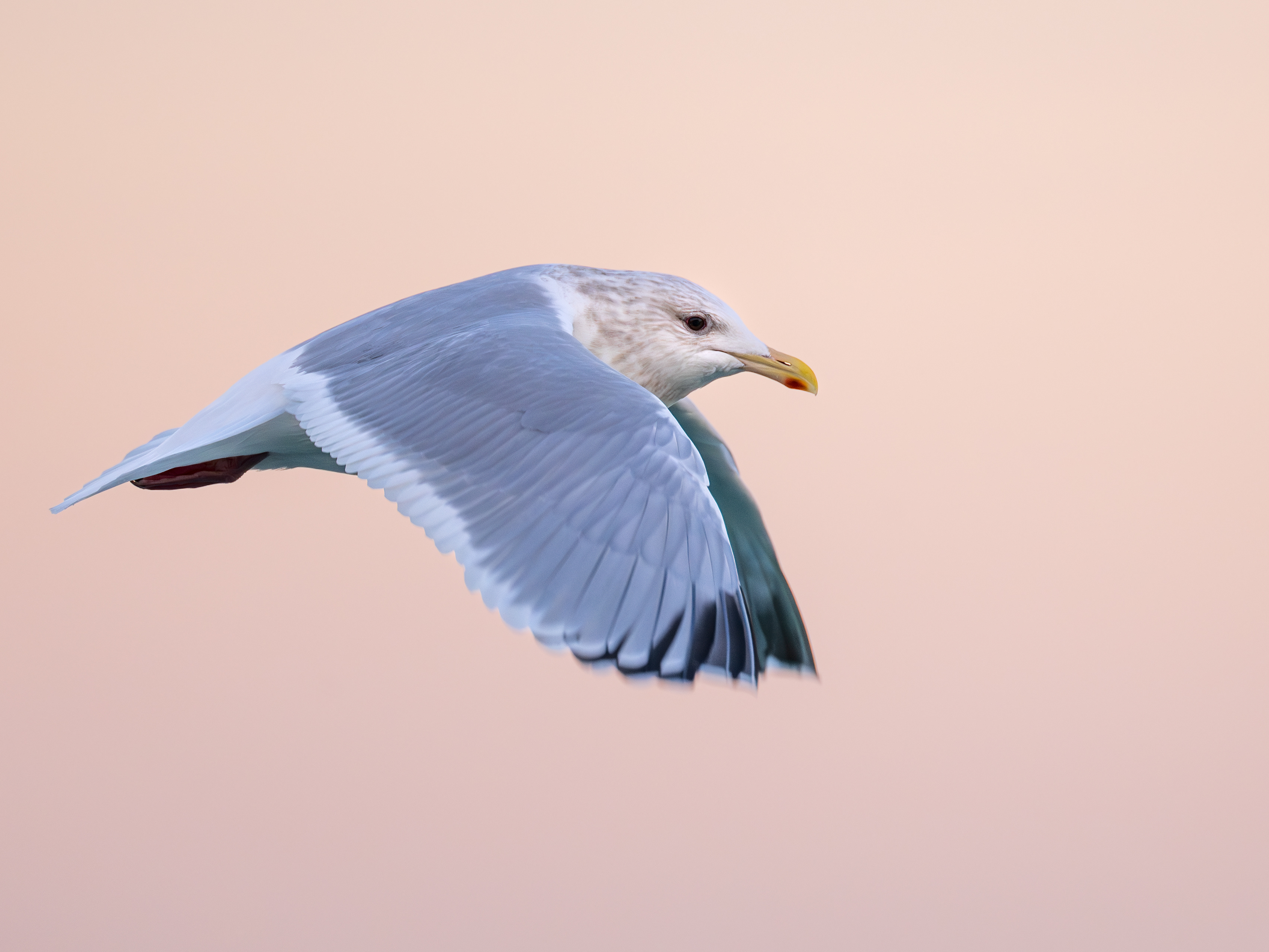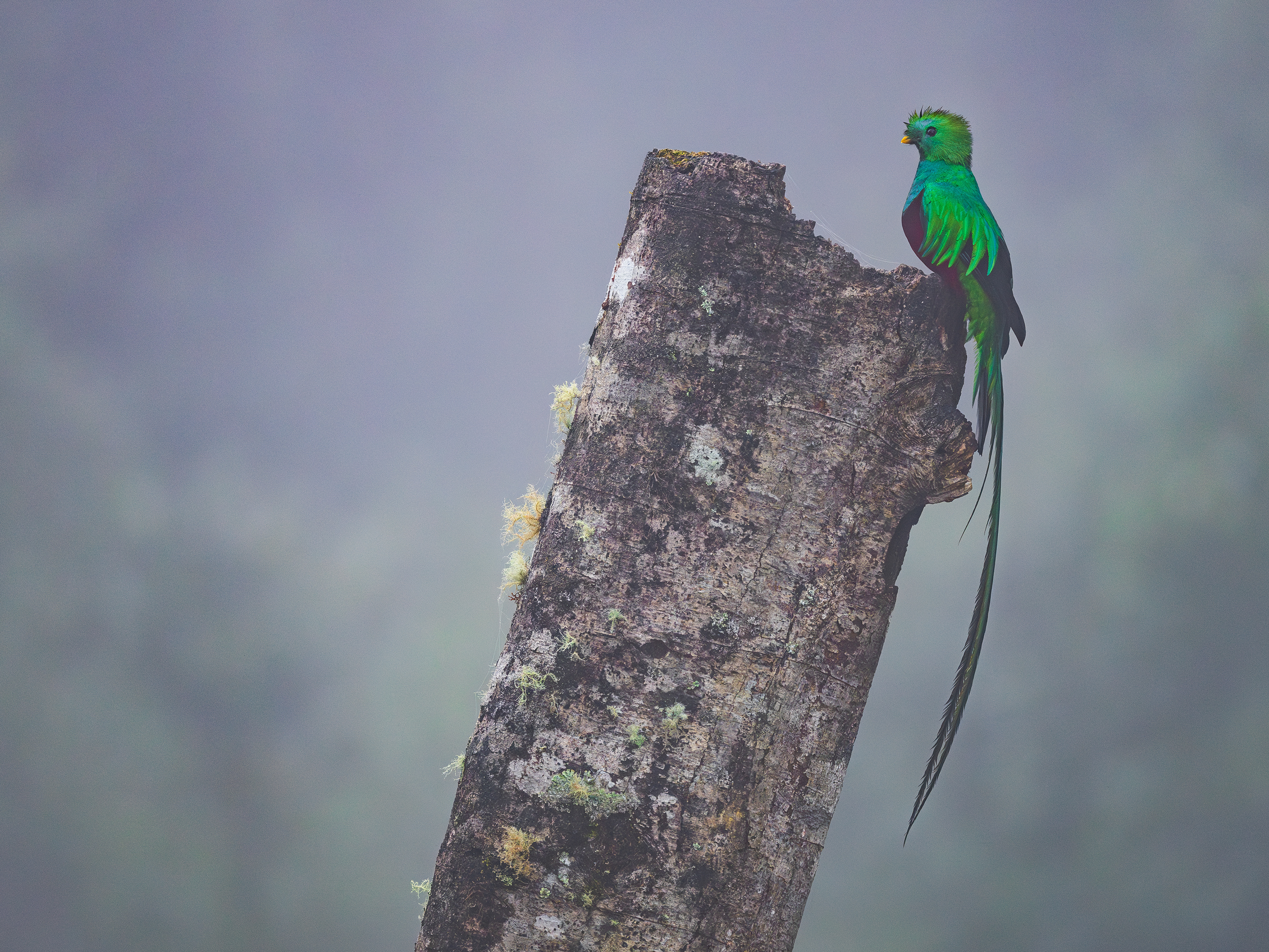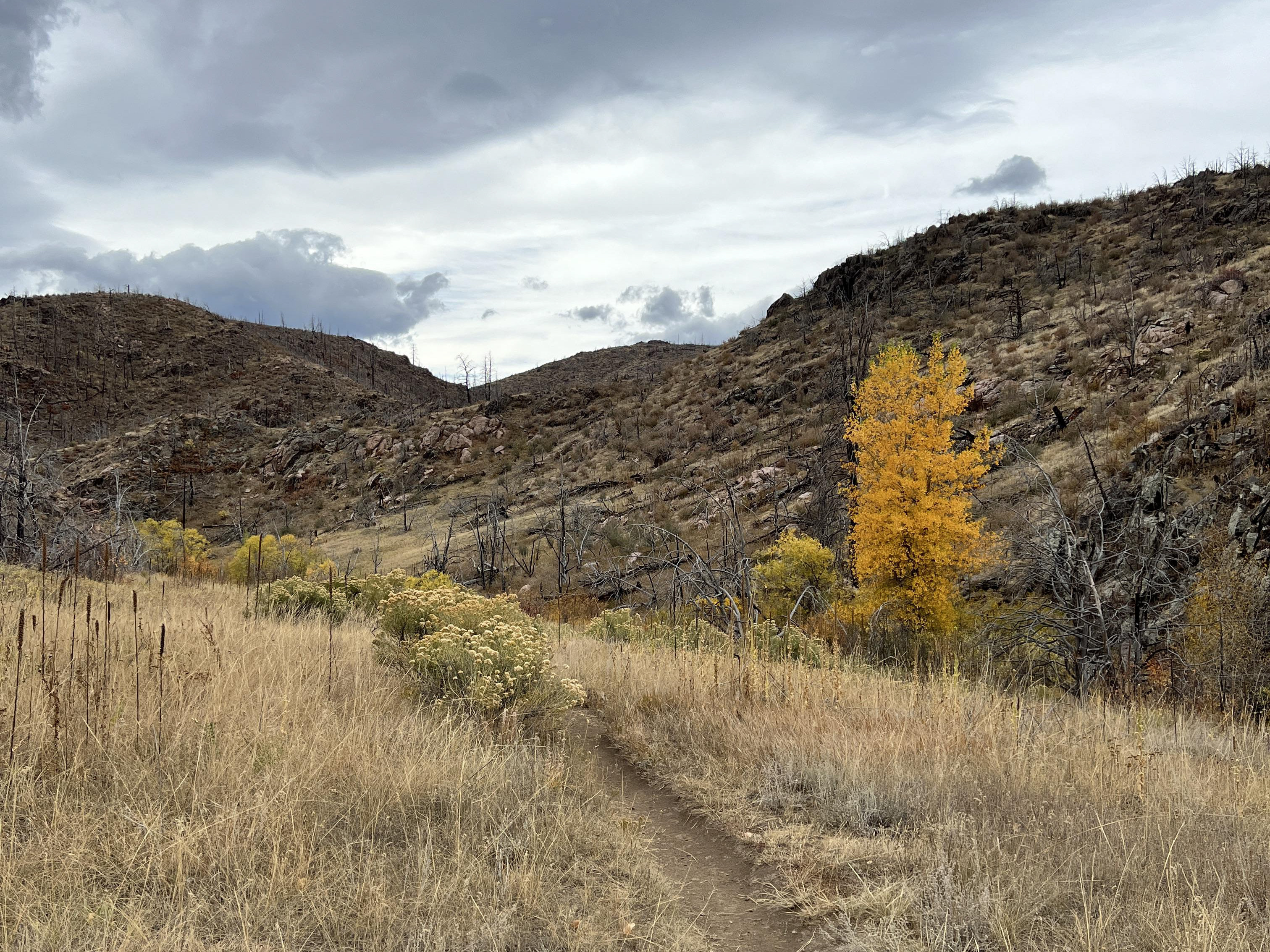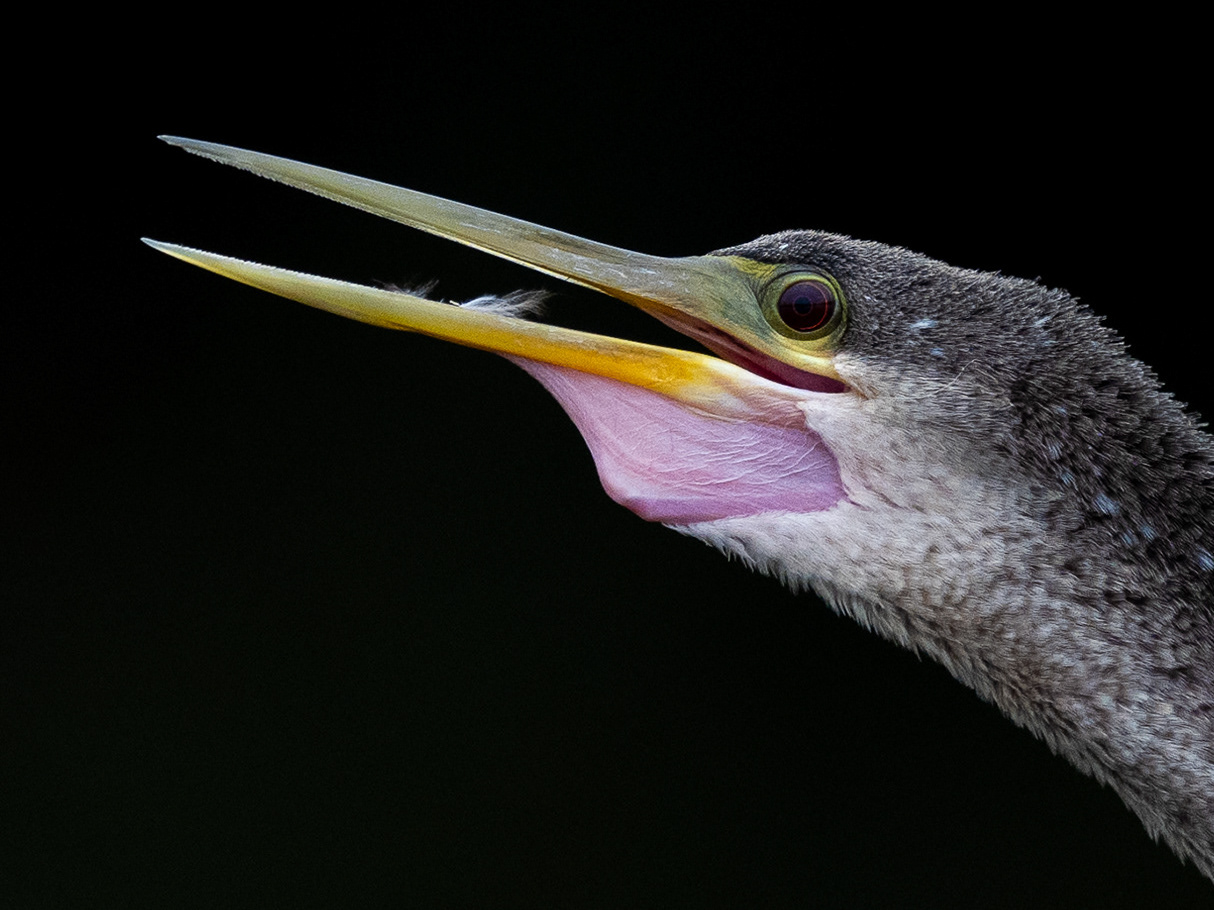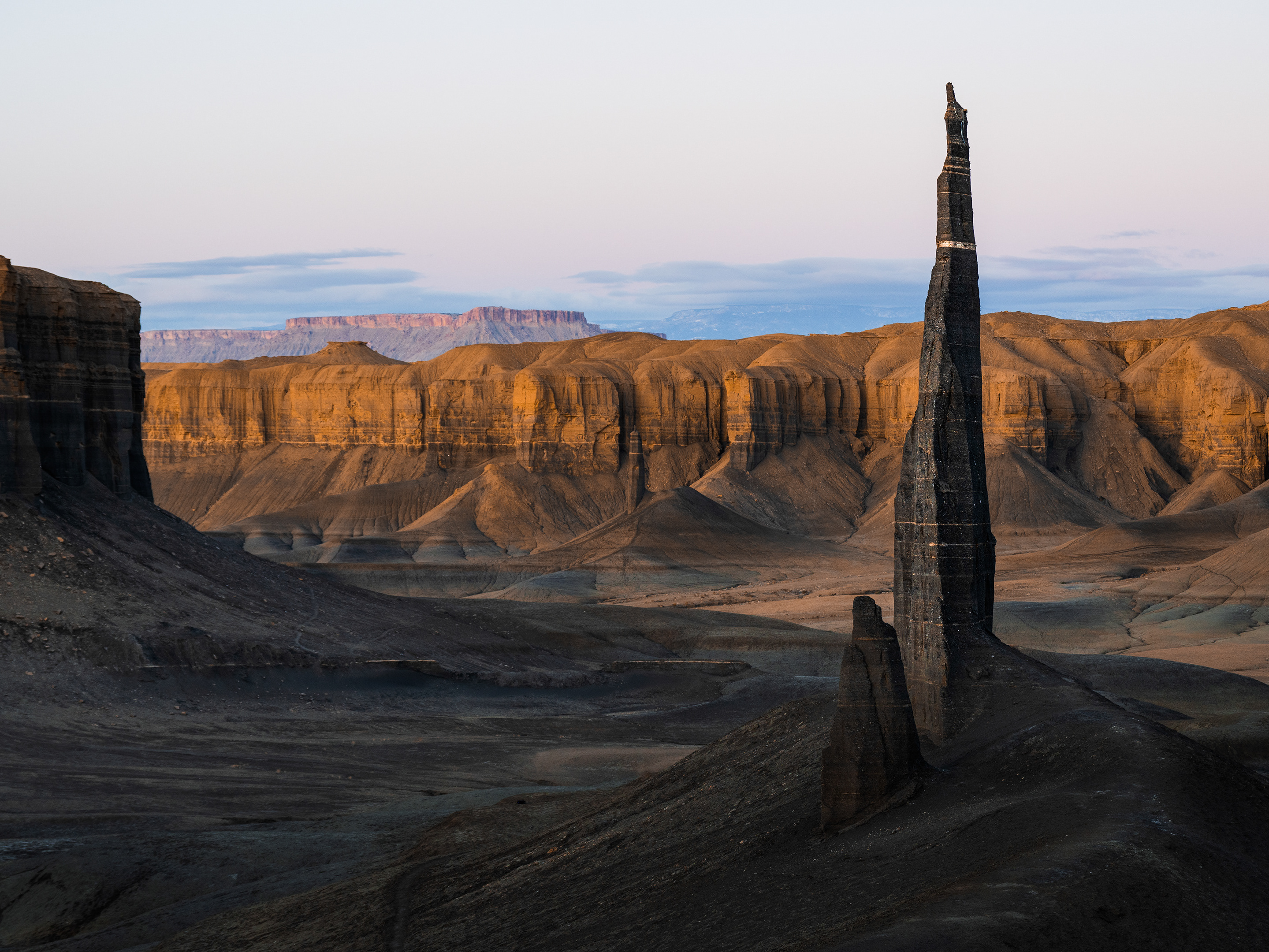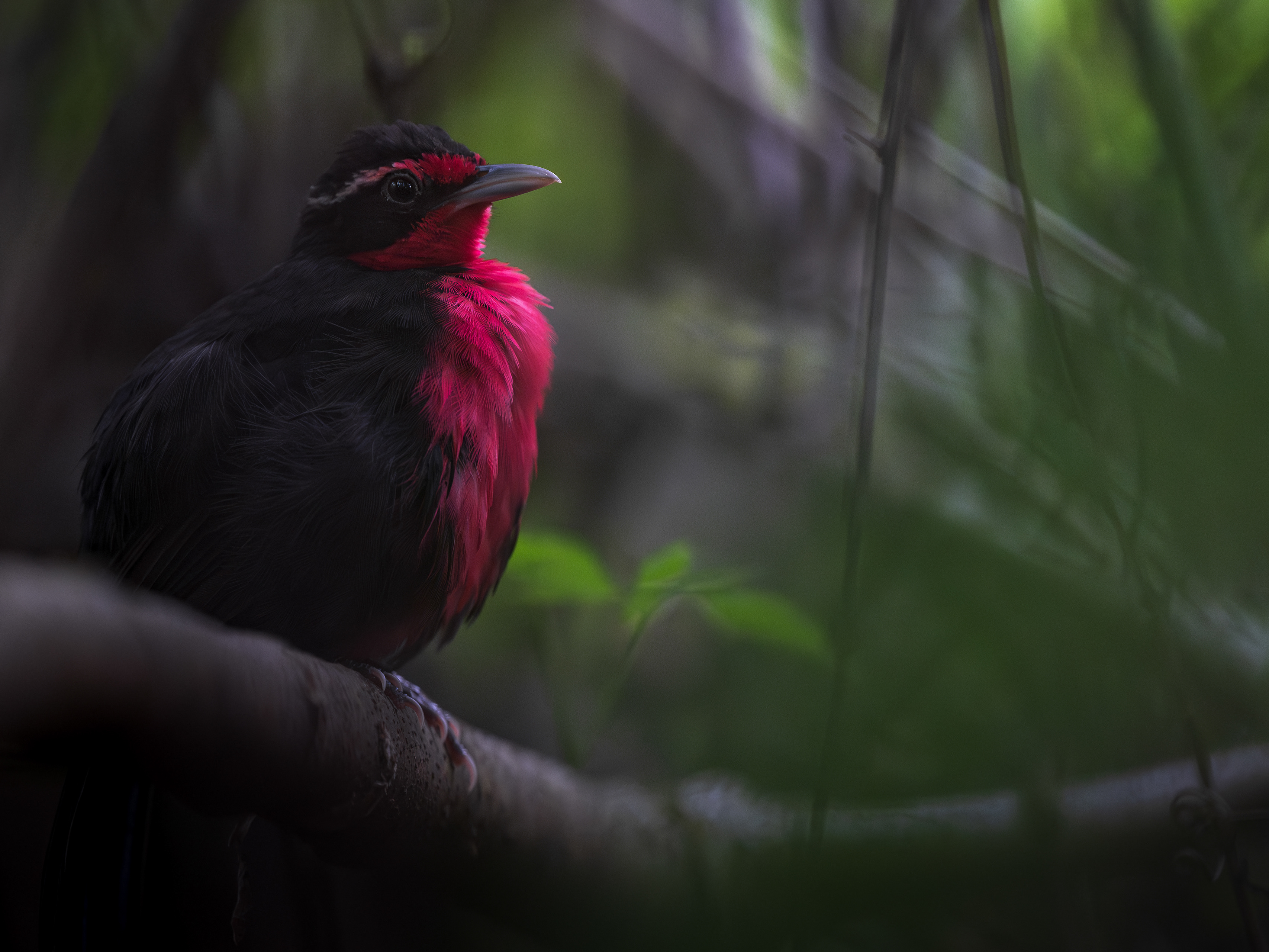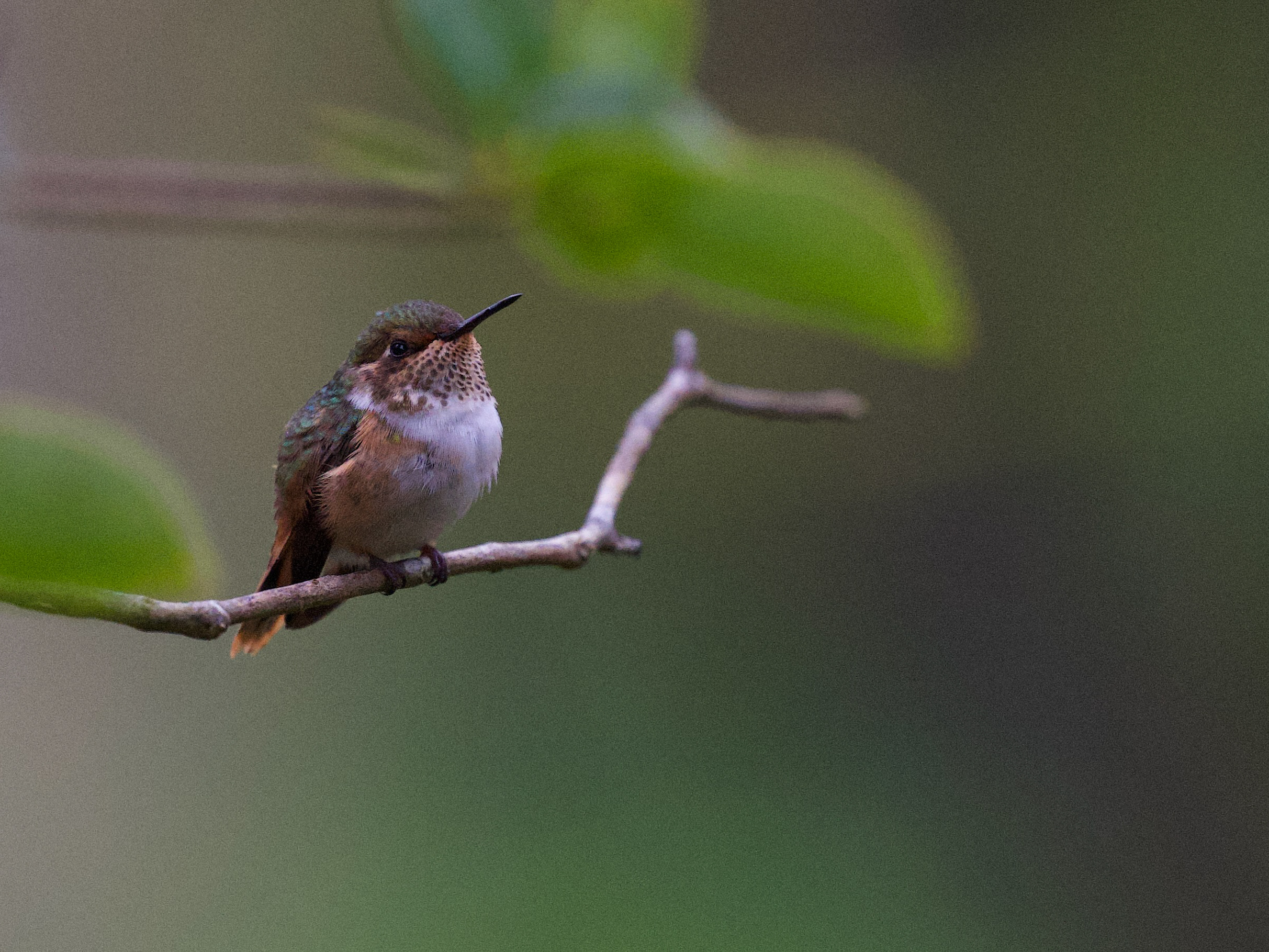Last Thursday, a Groove-billed Ani showed up about an hour south of Fort Collins, so at around 1pm, Finn and I found ourselves poking around Leyden Lake looking for this bird. They're quite loud when foraging, they throw a lot of stuff around and kinda crash around in the vegetation. After about 40 minutes of searching, we finally found the bird. A crowd of over 20 people followed it as it noisily poked around for grasshoppers. At this lake, there's a pier jutting out into the lake, which happened to cut the path in which the Ani was following. I decided to wait under the bridge in a pike of rocks, hoping the Ani would go under and not over. Thankfully I predicted right, and the Ani came right up to me before continuing along back to foraging under willows on the other side of the bridge. Shortly after, I suppose it got a little bored of skulking around, and popped up into a rosebush, and sat there for a few minutes. Sadly the harsh overhead light was a little tough to work with photo-wise, but I think I made it work out alright.
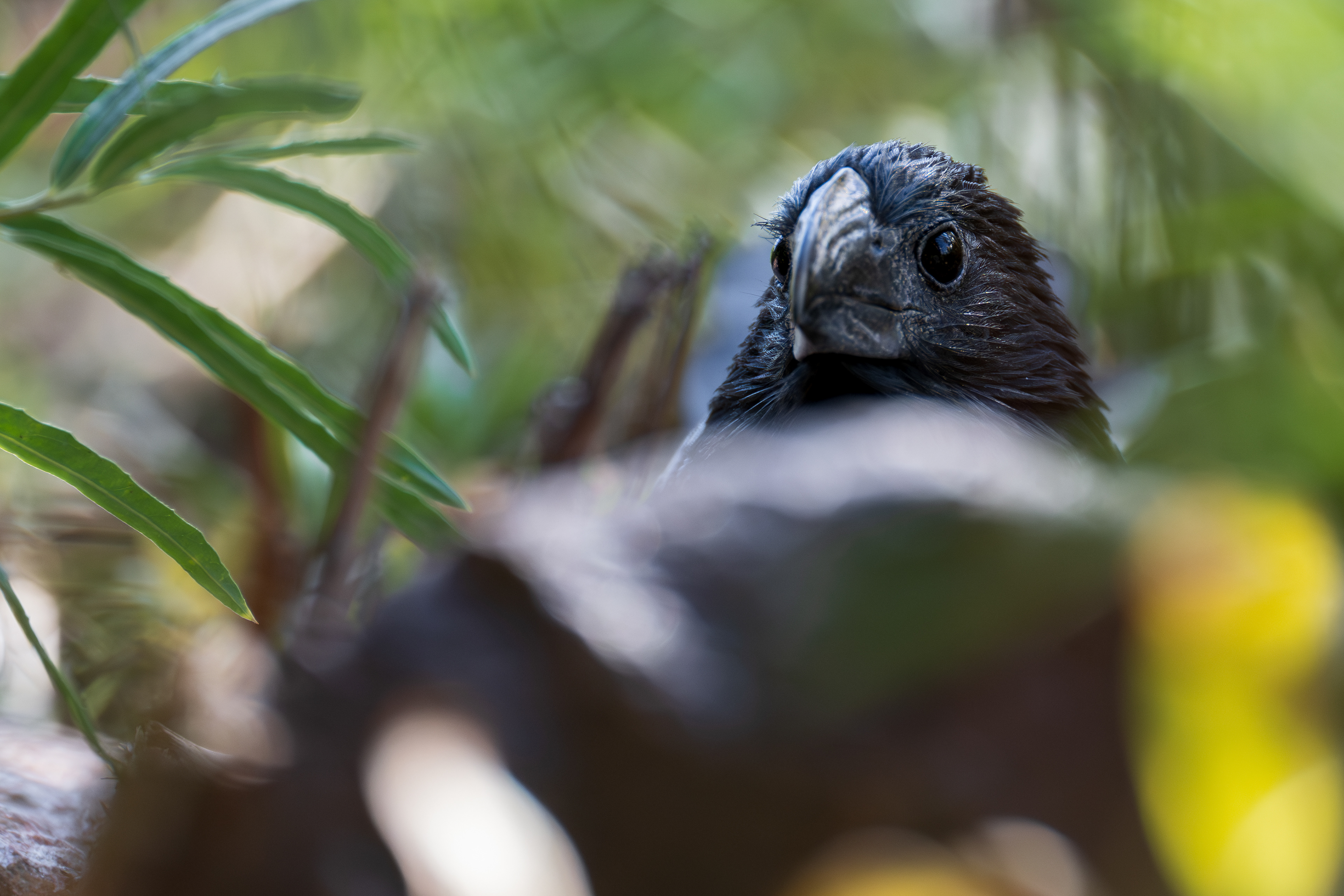

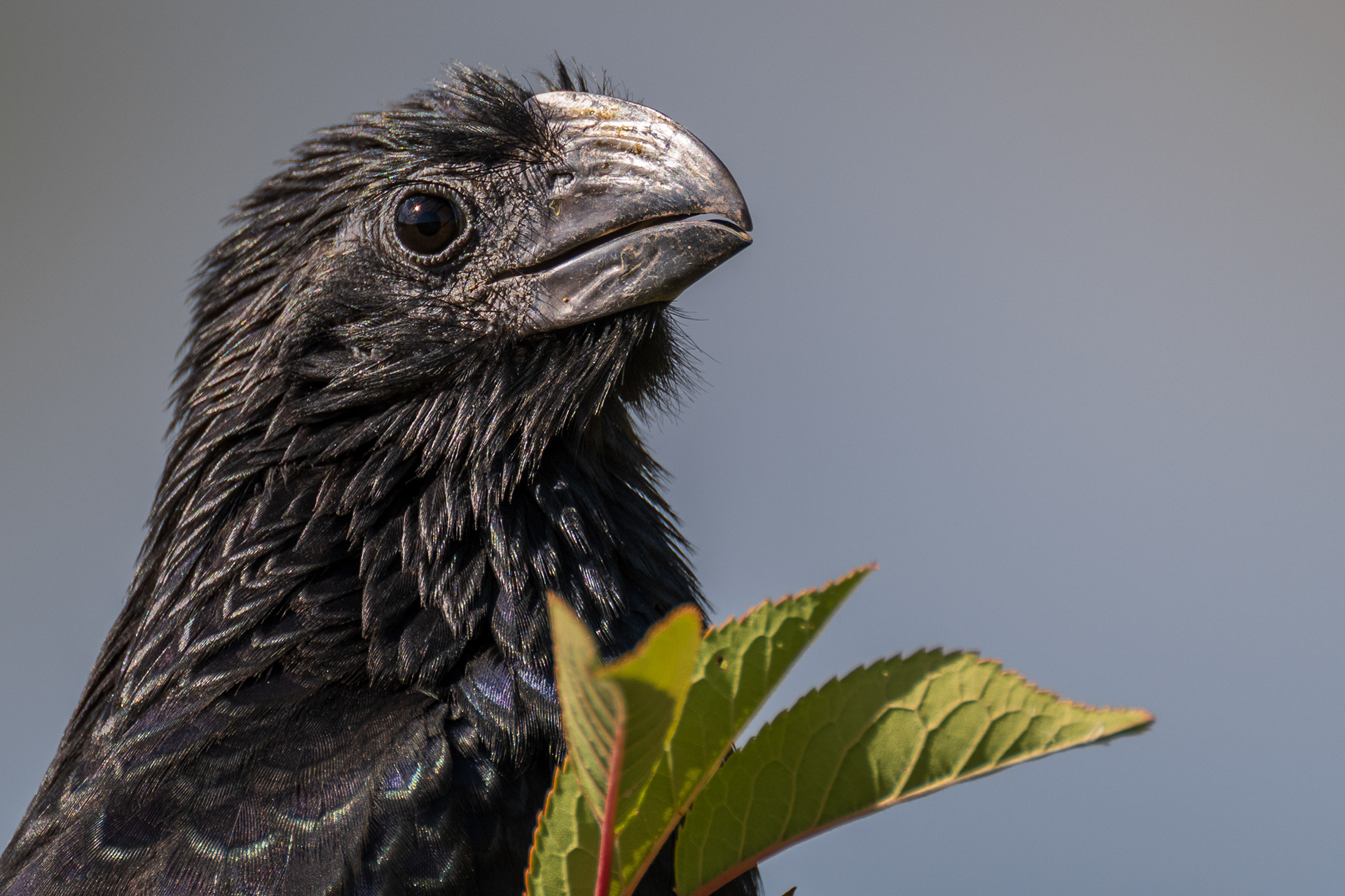



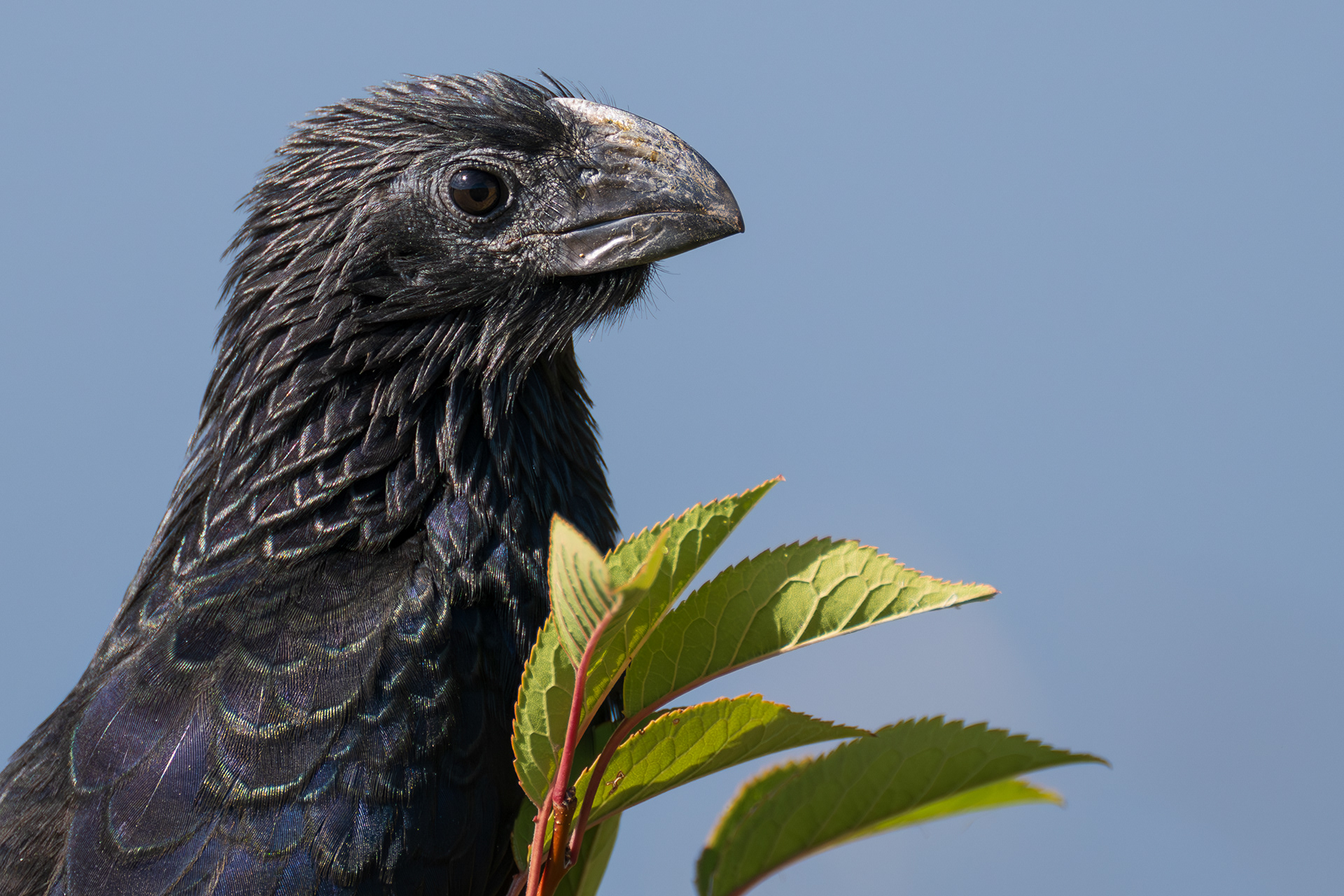
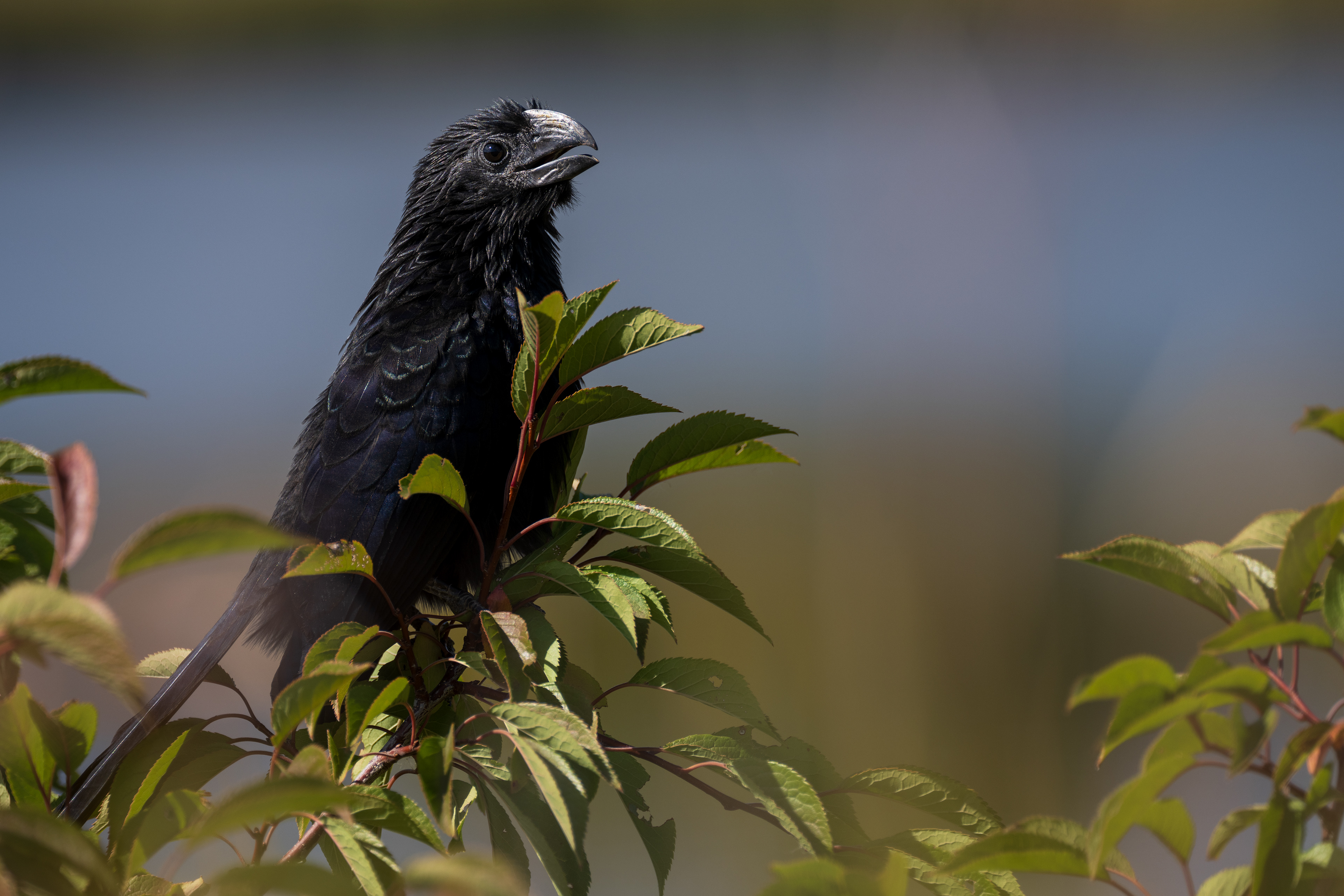

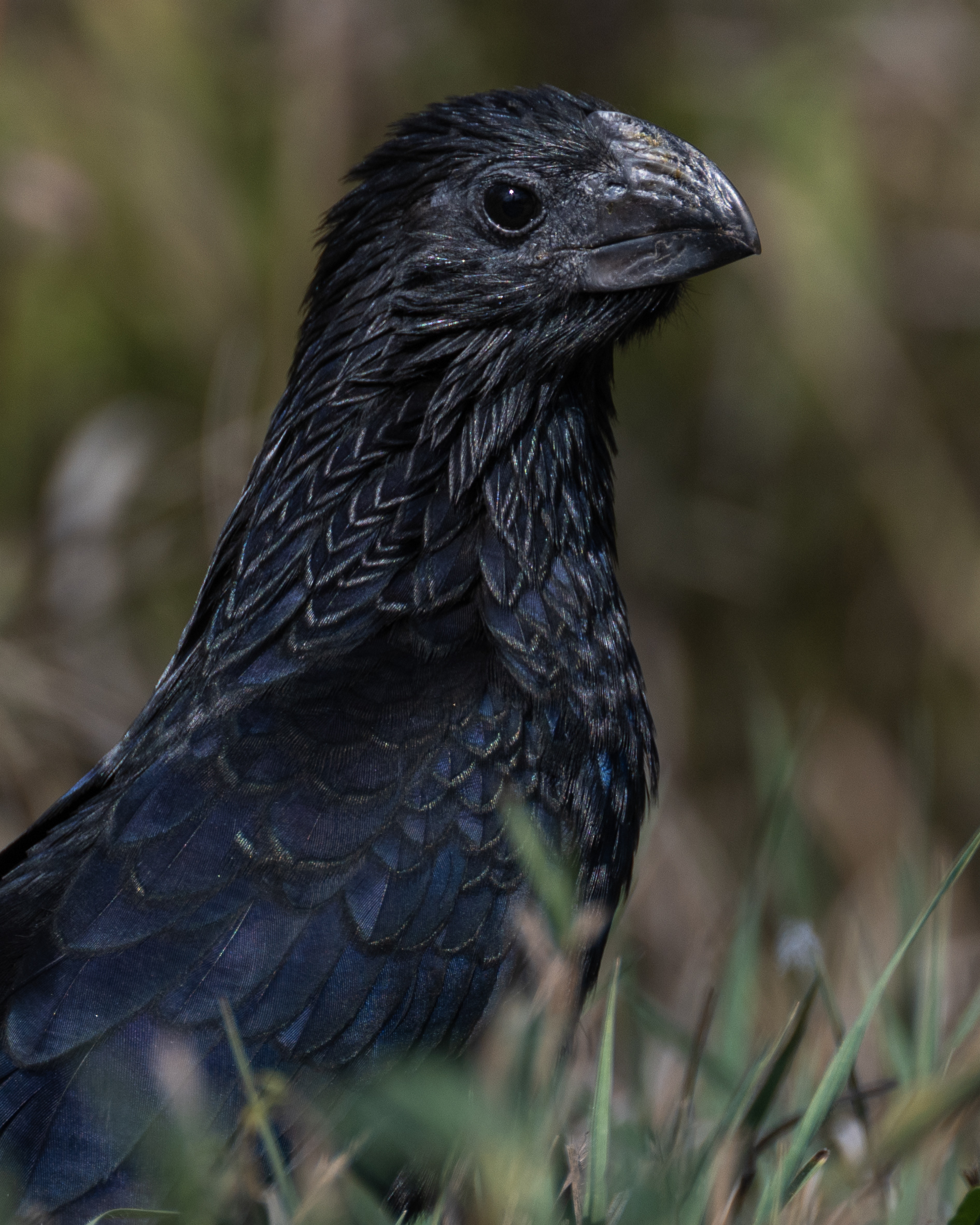

In addition, before the Ani adventure, I had spent a little bit of time birding the CSU arboretum hopefully trying to refind the Blue-headed Vireo I helped find the day before, but ended up spending most of my time photographing robins with a nice fall color backdrop.
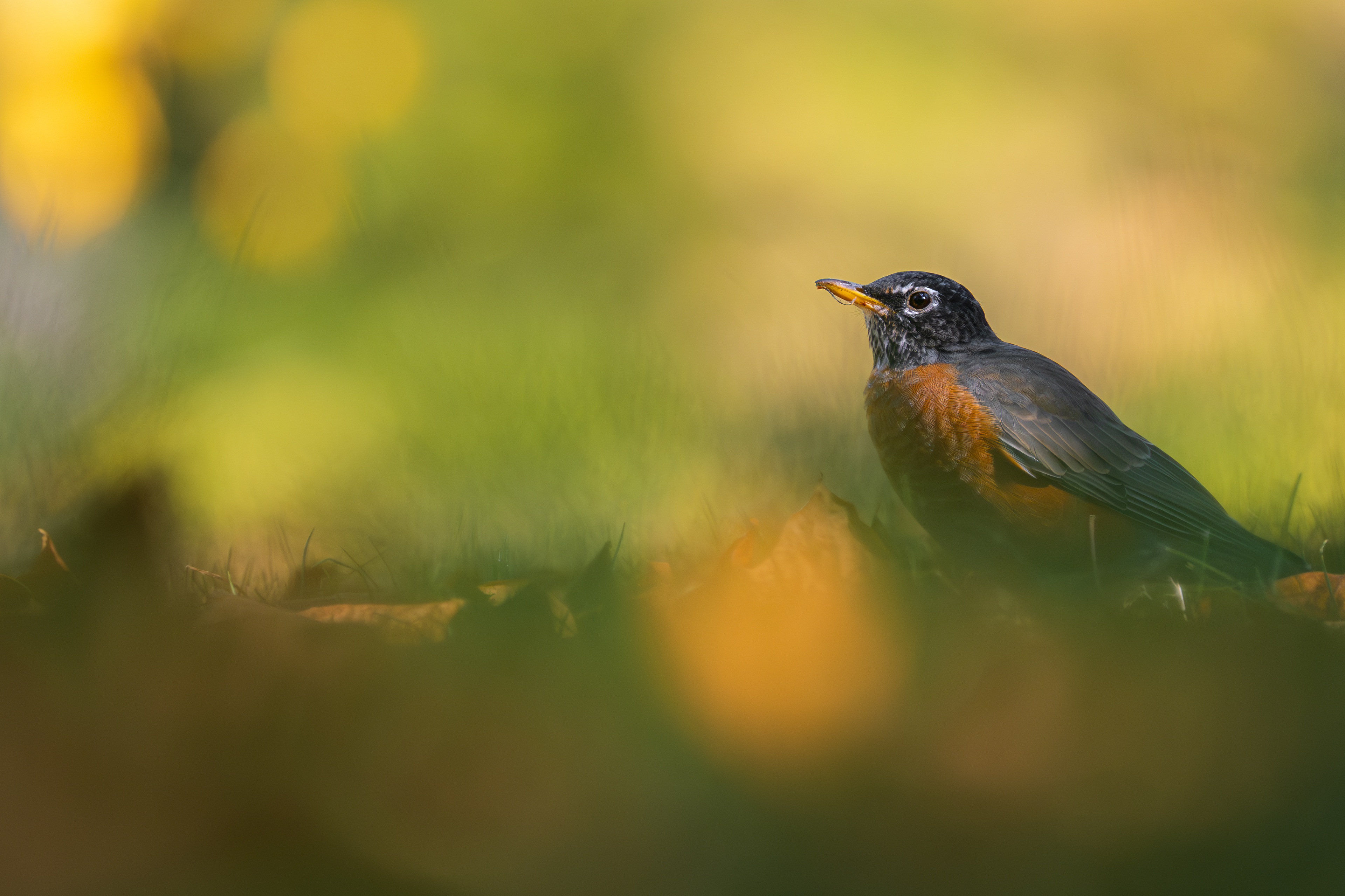

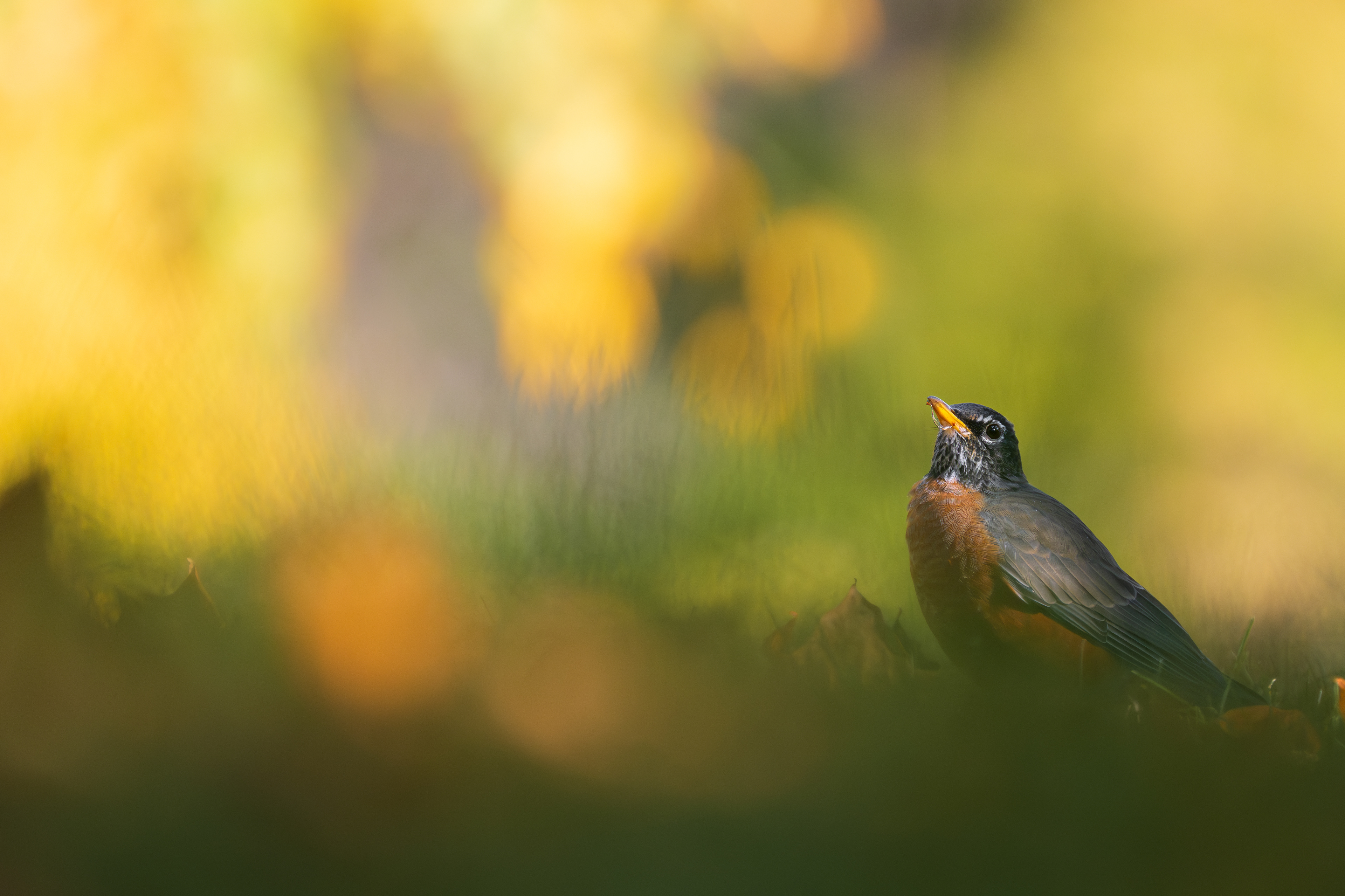
Thursday night, we knew that there had been a large solar flare the pervious morning, and figured it wouldn't hurt to take a drive out east to take a look for the Aurora Borealis. Just out of town where it was cloudy, we looked north and were amazed to be able to see a pinkish glow in the sky naked eye while driving. Our destination was Fort Morgan, but after seeing pillars dancing around just outside of Greeley, we decided to pull off onto a random county road before Fort Morgan to enjoy it.
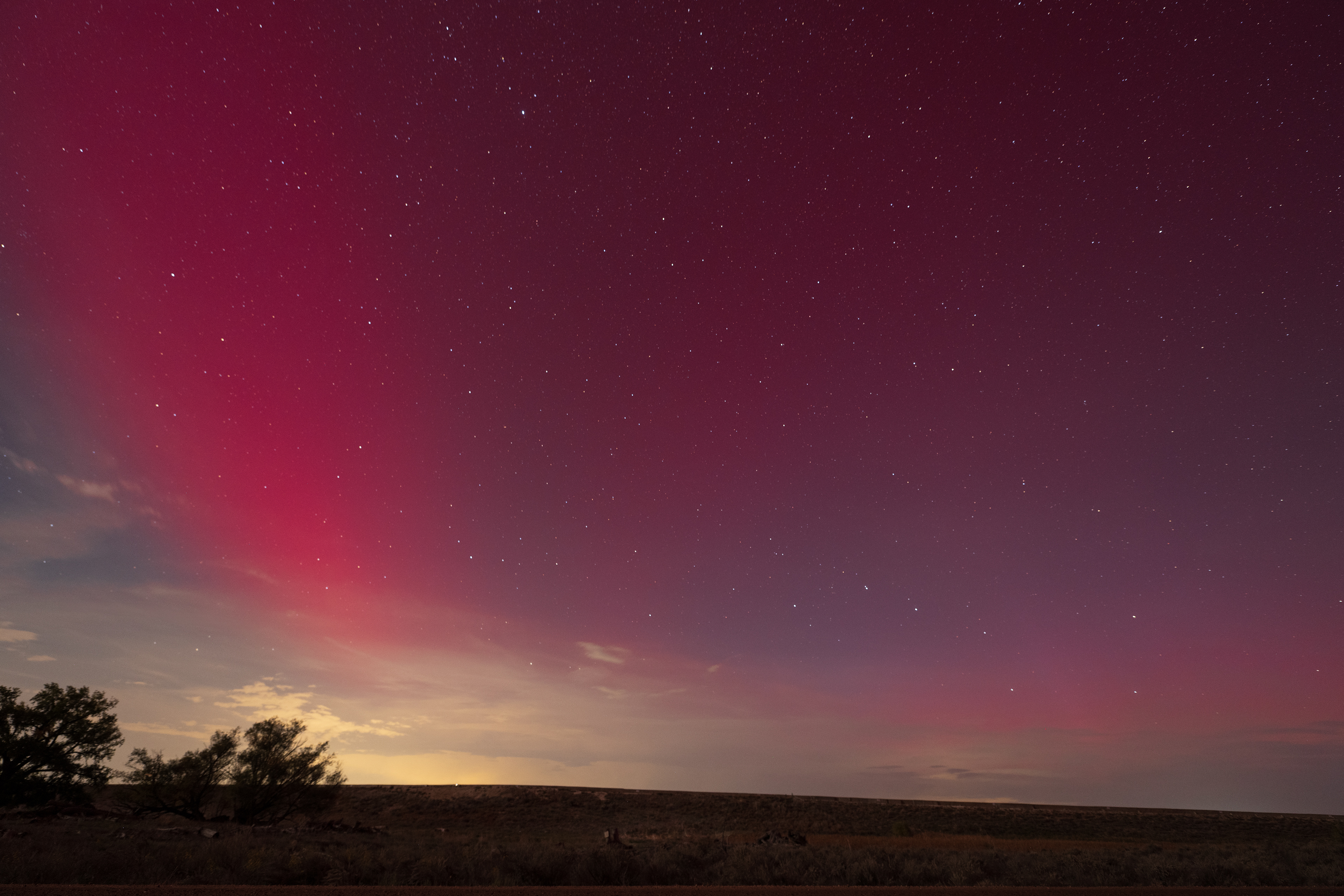
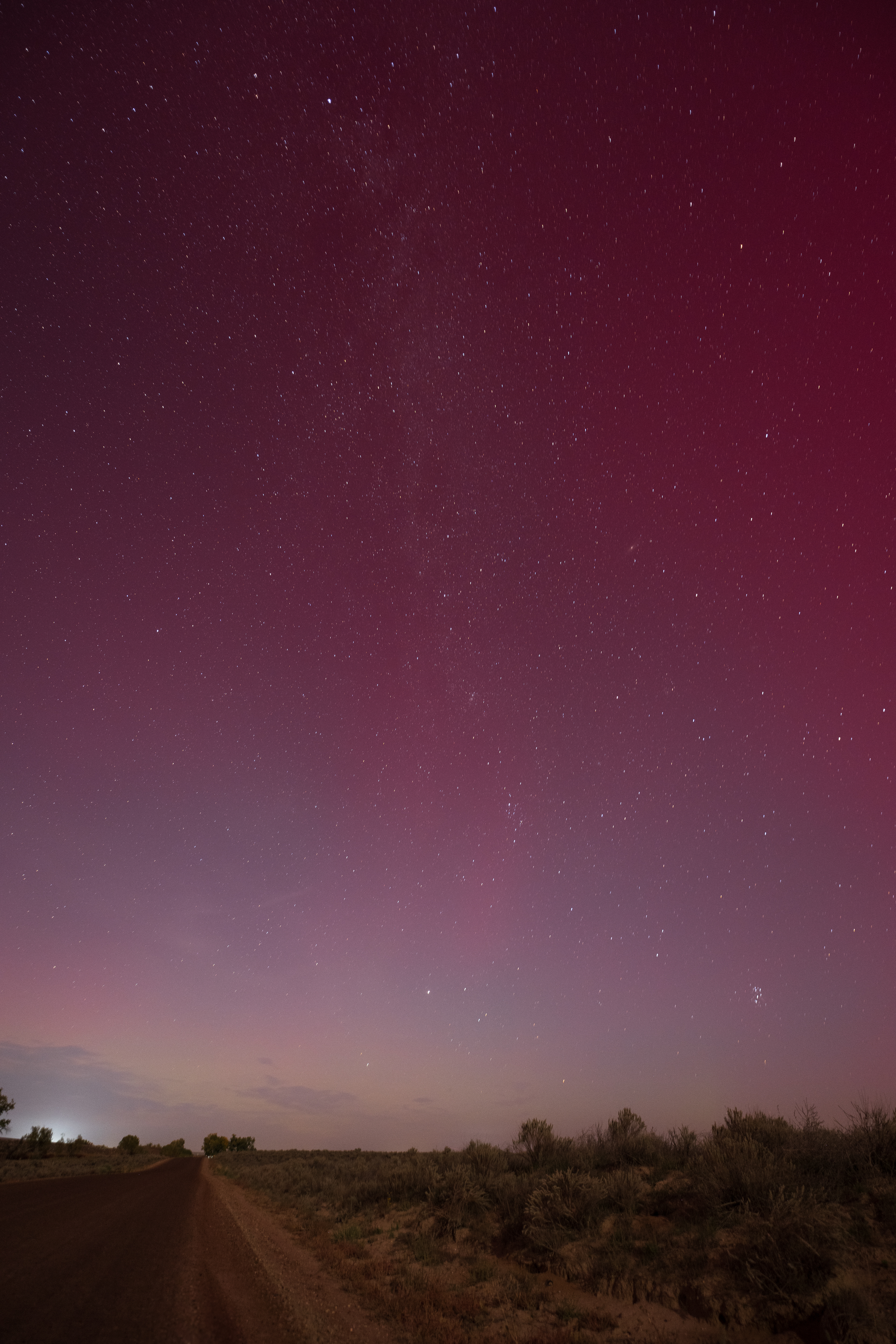
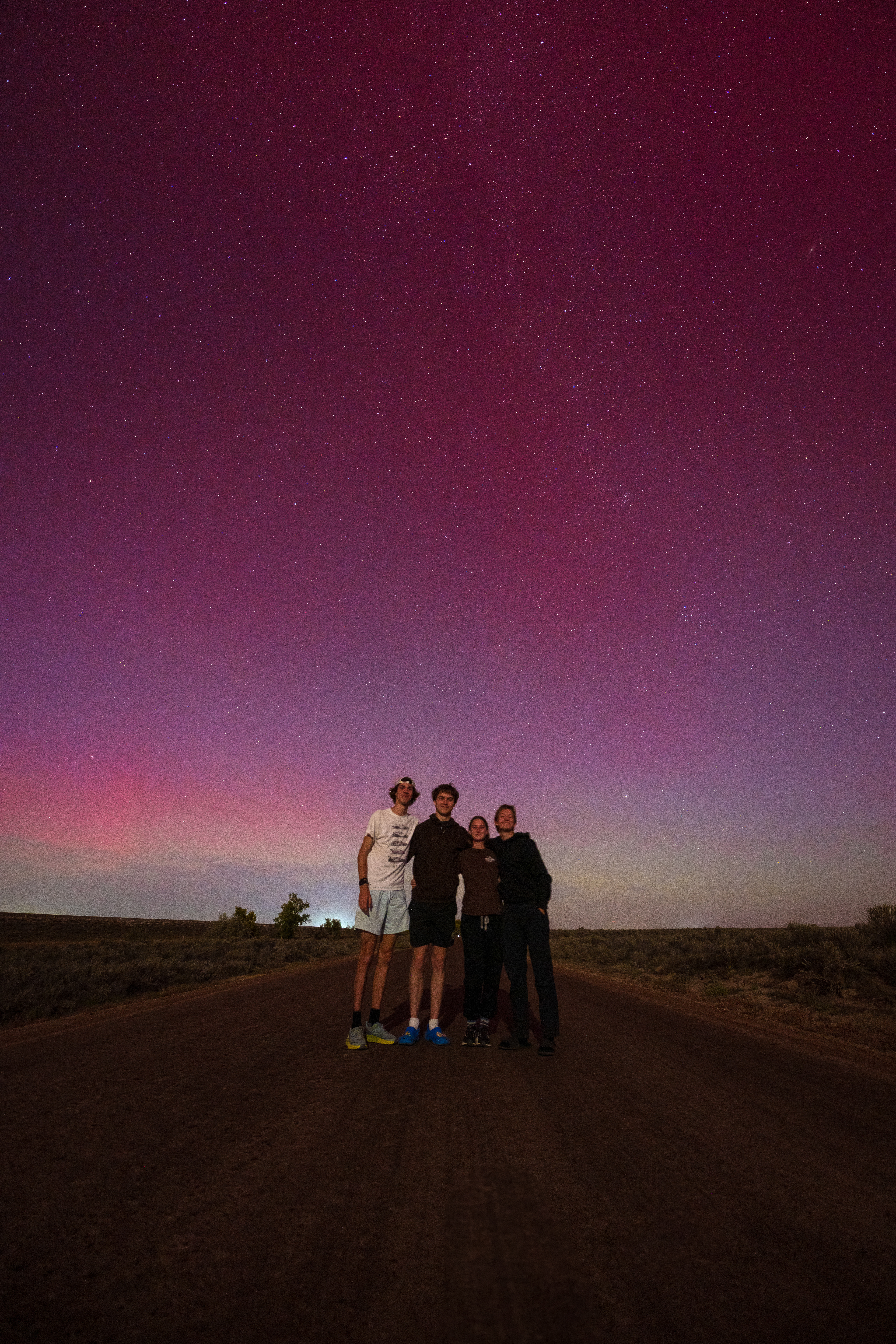

Friday afternoon, Finn and I got in a short climbing session at a crag we've become quite fond of, and I started working on my first real 5.11a on rock. Thanks to a very very very loose and sketchy spun hangar, I fell off the very steep roof crux, and had to bail out and traverse my way across the top to get to the anchors. I definitely want to toprope this route and project it a little bit to get the send on lead, all of the moves feel very doable. After I get the send on this route, there will be only two more routes I need to climb (a 5.10b and 5.12a) at the crag to complete them all... But it'll probably be quite some time before I can get to that 5.12.

The view from the top of the "Low Hanging Fruit" crag.

Friday night, Finn and I got invited to observe Northern Saw-whet Owl banding, which ended up being one of the coolest things I've ever done. I've wanted to experience it for years and years now, and to check it off my bucketlist was amazing. Another loose goal of mine since I became interested in birds has been becoming a licensed bird bander, and with opportunities like this, I can feel that goal becoming more and more of a reality.
That night, we arrived to the location greeted by a duetting pair of Great-horned Owls, which we assumed would be bad for having any hope of netting a Saw-whet. We were told that since early September, when the station started netting owls, they had been only catching them many hours late into the night, like 2:00am late... Being there at 6:30pm, that sounded to me like we would be in for a loooong haul. After our first 30 minute net-check timer went off, we walked down from the tent station to the nets, and much to our surprise, we had an owl in the first net! Back at the station, we took all of our measurements, and noted that it was the heaviest individual out of a few dozen caught this season, weighing in at 91 grams (a full 8 grams heavier than the previous heaviest). Another really cool thing I noticed that I've never seen firsthand is just how crazy long their wings are. For being a little 8 inch bird, its more-than 18 inch wingspan was impressive to see. It was also my first closeup look at the specialized barbs they have at the leading edge of their wings to help silence their flight. Honestly, this whole experience was just full of really amazing and mind blowing little tidbits about these birds, which included getting to see the Porphyrin fluorescing neon pinkish-orange under UV light. It's a really good way to age the birds, as porphyrin degrades very quickly as the birds mature. Even uneven amounts of porphyrin in the underwing can tell a lot about how far along a bird is between being a hatch-year bird and being an adult.
Later in the night, we caught one more bird, which ended up being the smallest bird caught this season, weighing in at just 71 grams (11 grams lighter than the previous lightest individual of the season). The combination of it being quite runty and having a long wing cord length for its weight meant that it was impossible for us to sex this bird.
In addition to the Great-horned and Saw-whet Owls, I heard the resident Eastern Screech Owl at one point, which is almost as crazy as catching Saw-whets with Great-horneds in the vicinity. Eastern Screech Owls can weigh up to three times as much as Saw-whets, despite being less than half an inch larger on average, meaning that they actively predate Saw-whets when possible. Insane!
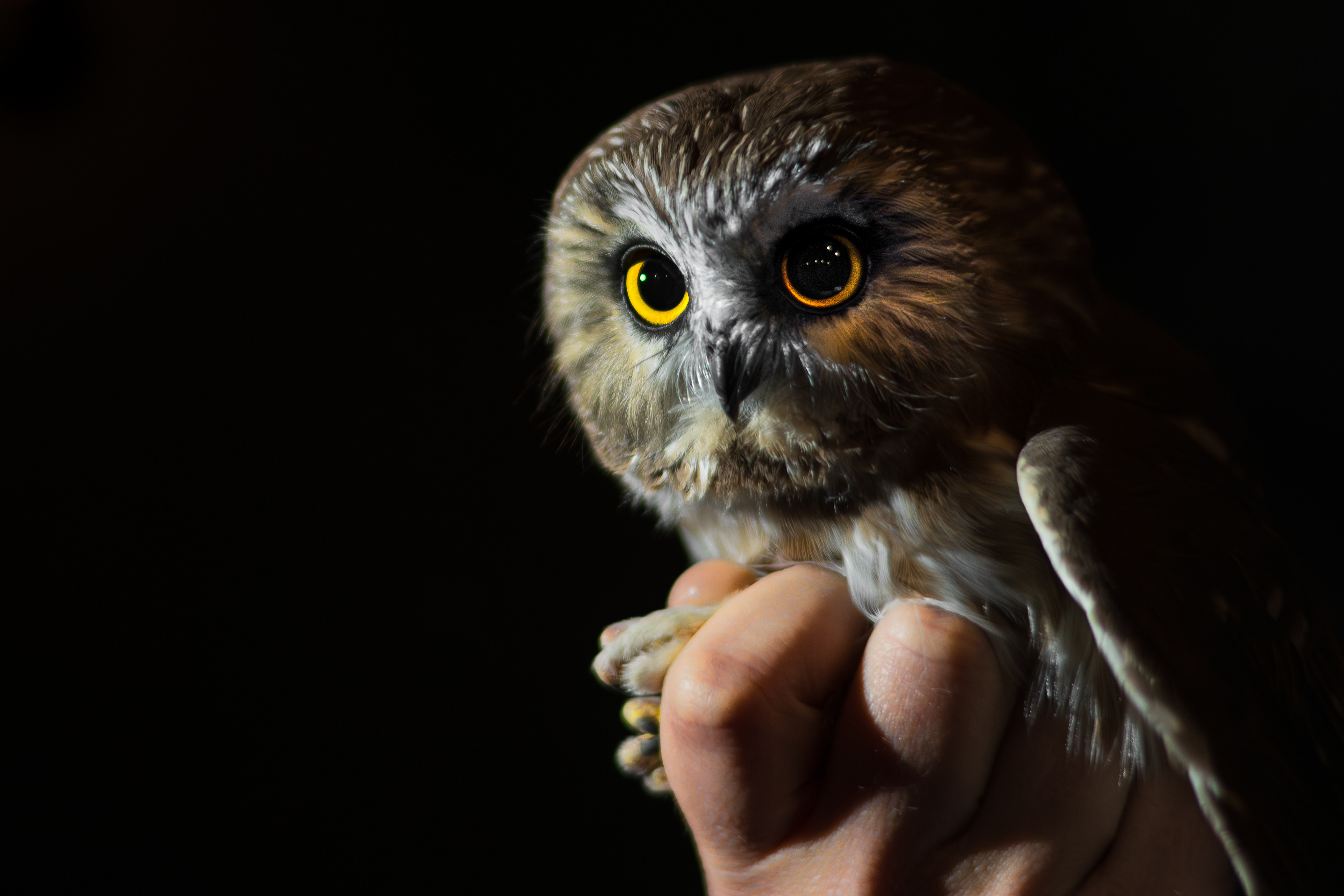

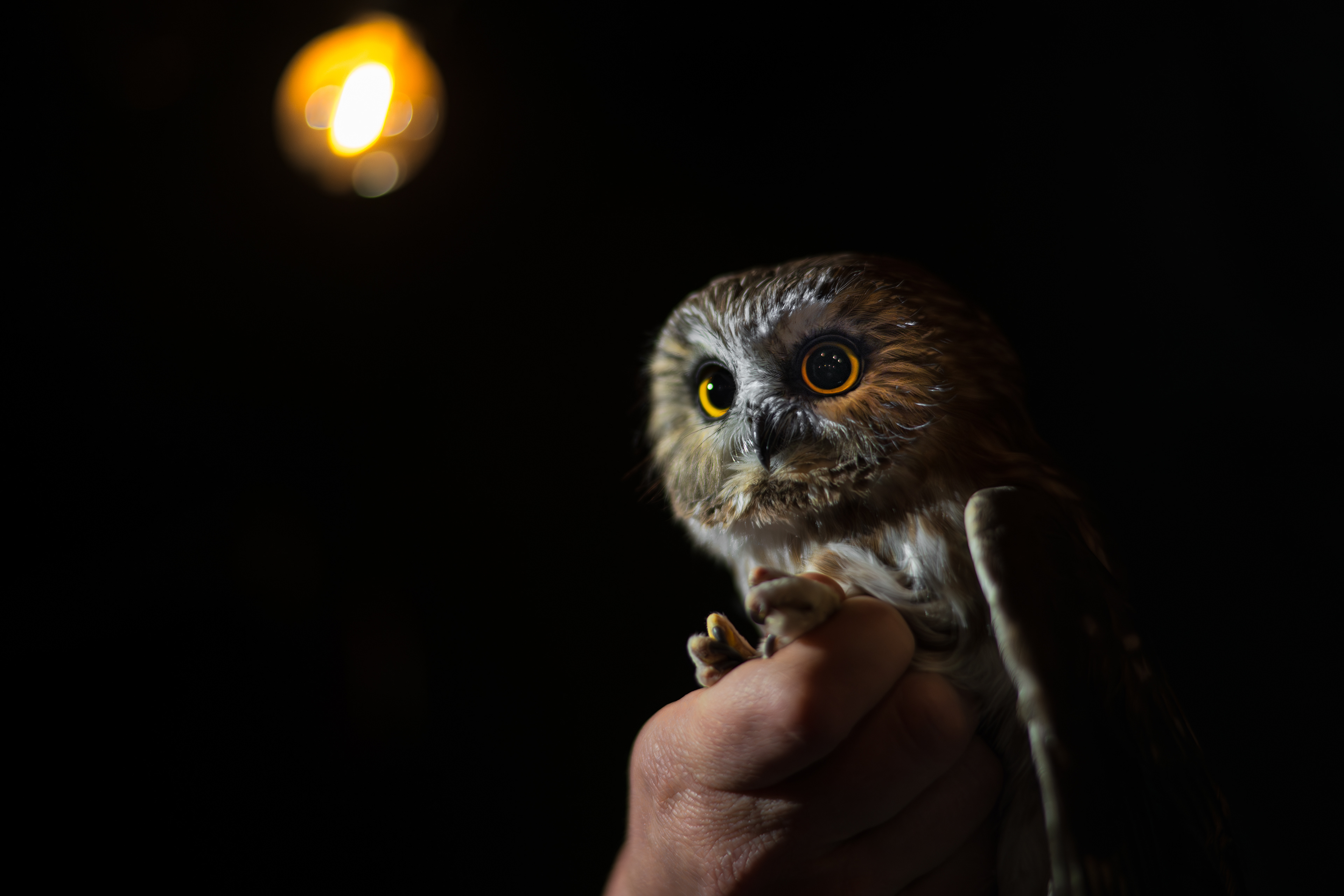

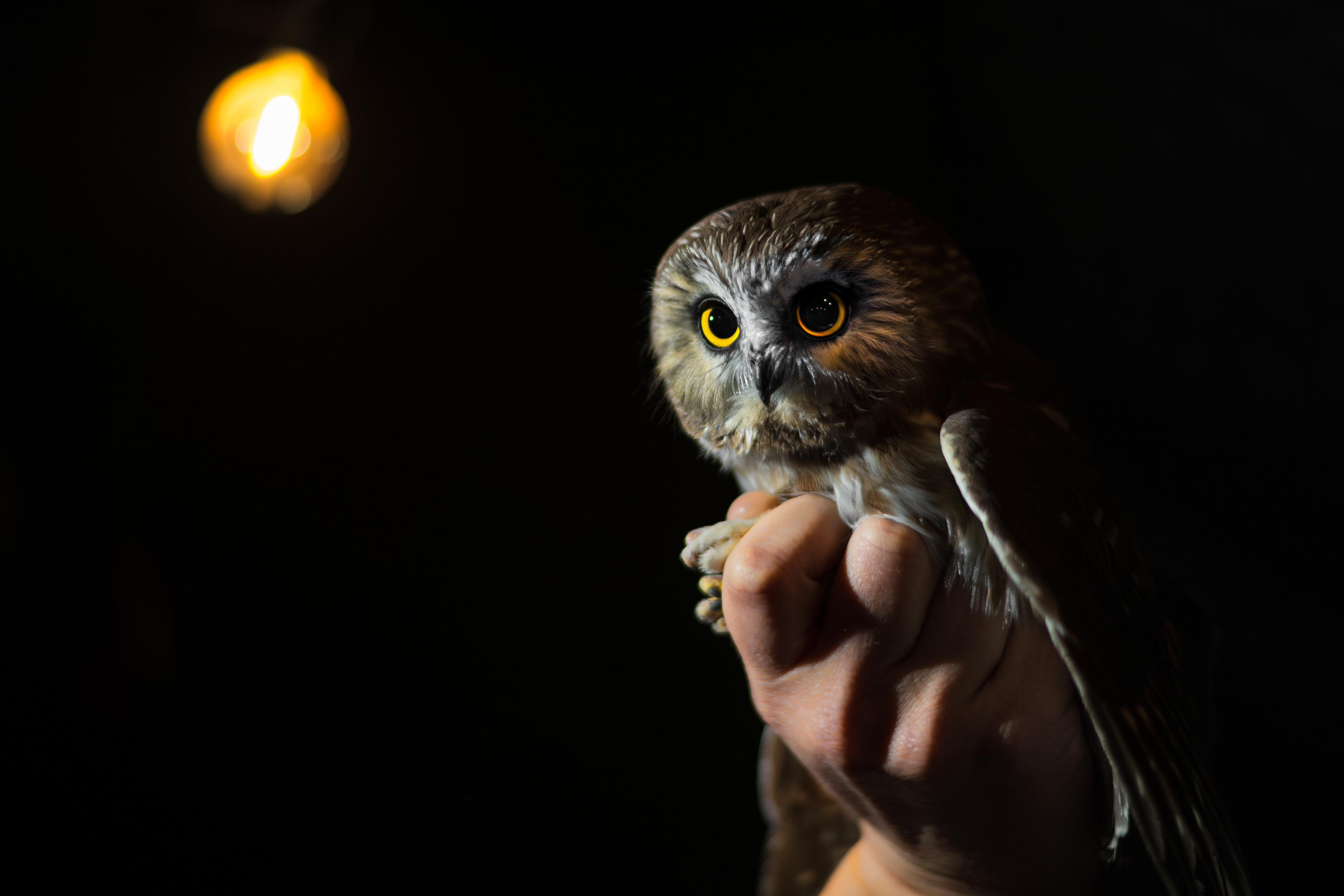
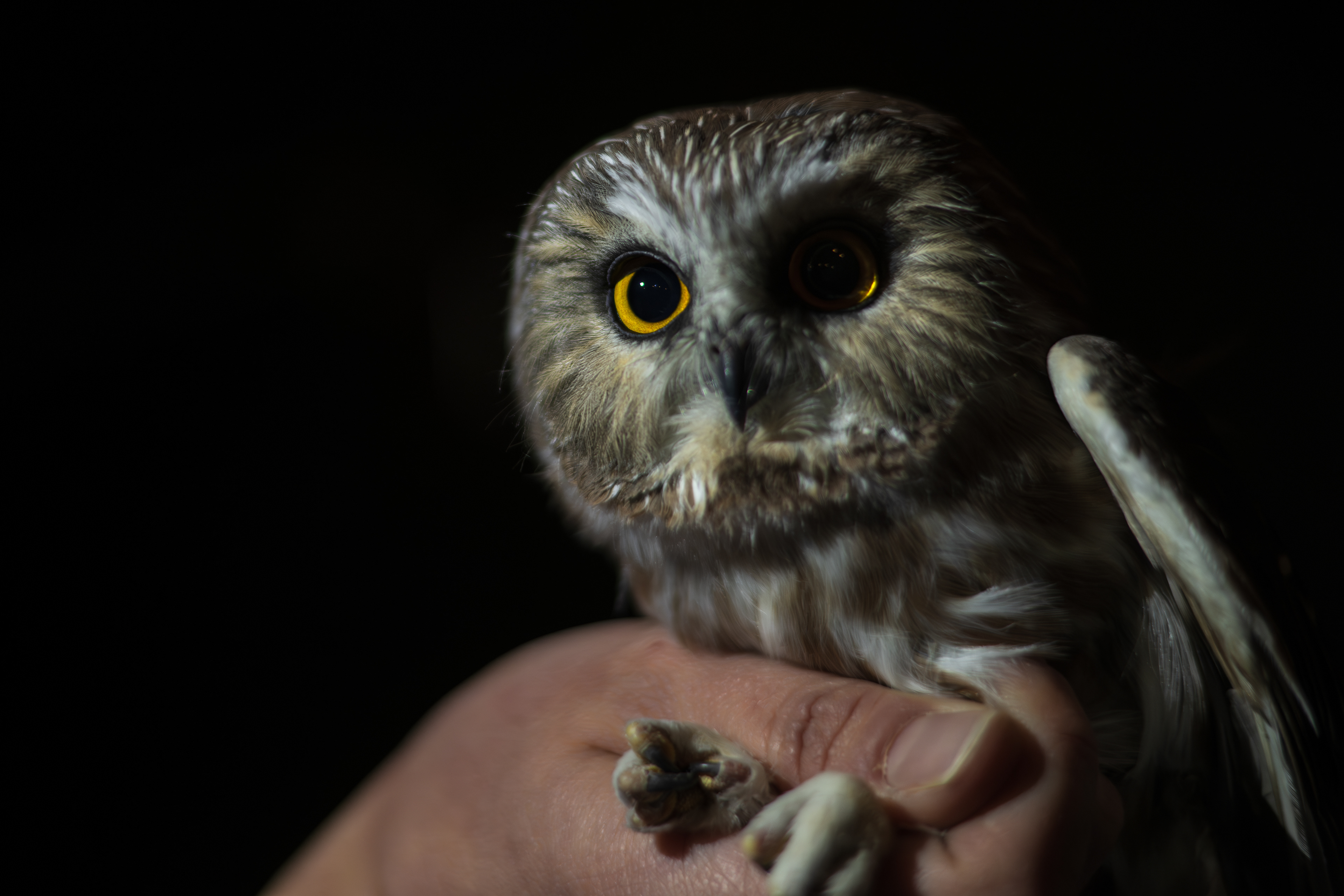





Saturday morning I led the CSU ornithology club trip around Lory State Park, specifically hiking the Arthur's Rock trail in search of foothills species. Nothing too interesting was seen, but it's always nice to hike that trail.
Sunday morning I hiked one of my favorite places to bird in the Fort Collins area, Young Gulch. usually this fall when I bird it, I only walk about a mile to two miles in, but this time I hiked the 5.5 miles out to the end to see what else I could find. 11 White-winged Juncos, a Dusky Grouse, Winter Wren, and a Northern Goshawk hunting Red Squirrels alongside the trail for about a mile were the highlights. I also think Young Gulch is one of the best foothills spots within 30 minutes of town to see great fall colors, it's loaded with aspens, willows, cottonwoods and other spectacularly colored vegetation.



In addition to all of the Thursday-Sunday fun, on Wednesday morning, my friend Tao texted our CSU Ornithology Club groupchat about a Solitary-type Vireo in the campus arboretum. After class I went to check it out, didn't see it, but looked at the photos he got. To me at the time, it looked like a bright Plumbeous/really dull Cassin's Vireo as you couldn't see much color/actual details at all, so I passed it off for the rest of the day. Just before my late evening lab, I decided to swing by again to try to find it, nabbed a Rose-breasted Grosbeak along the way, and almost instantly found the vireo. Being so used to Blue-headed Vireos, my first thought was "Oh, Blue-headed Vireo, cool"... That's when I had to do a double take and shout to the other birders nearby to get over and take a look at it to make sure I wasn't crazy. I wasn't crazy, it was a Blue-headed Vireo, and that made for good motivation to make it through my three hour lab starting at 5:00pm that night.
